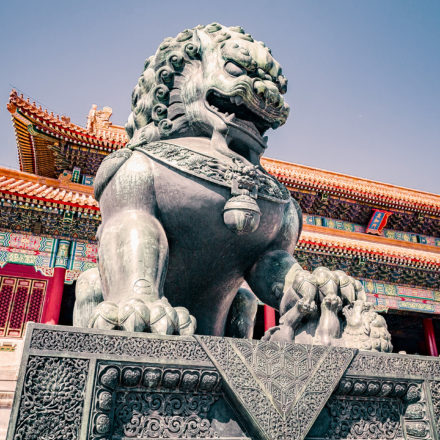Xiaoxia Zhang, an IP Partner in KWM’s Beijing office, looks at whether a company accused of breaching a patent can rely on the classic ‘prior art’ defence – that the technology or design existed beforehand – when it involved violating a contract. Based on a Supreme People’s Court of the People’s Republic of China (SPC) decision, the answer is no: the fundamental principles of civil law triumph.
The ‘prior art’ defence is commonly used in patent disputes. This relies on the existence of the patented technology or design before it obtained that legal protection. Or, in the words of Article 67 of Patent Law of the People’s Republic of China (2020 Amendment):
“In a patent dispute, if the accused infringer has evidence to prove that the technology or design it implements belongs to prior art or prior design, it does not constitute a patent infringement.”
The term ‘prior art’ is defined in Article 22 as referring to “the technology known to the general public both at home and abroad before the date of application”.
In the civil judgment of the Supreme People’s Court (SPC) in Zui Gao Fa Zhi Min Zhong No. 1568 (2020), a clear answer was given to the question of whether a prior art defence could apply to a technology or design illegally disclosed in violation of the fundamental principles of civil law and contractual confidentiality obligations. That answer? No.
Background of the Case
- In October 2017, Huanxin purchased a stake in child stroller rental equipment from Farina, entering a Purchase Contract and a Confidentiality Agreement. This stipulated that Farina would design the products according to the requirements of Huanxin and that the intellectual property rights would belong to Huanxin.
- In February 2018, Huanxin applied to the China National Intellectual Property Administration (CNIPA) for a utility model patent entitled “a connecting handle applied to the automatic rental and sales terminal system”.
- In September 2018 the patent was granted.
- In October 2018, Huanxin discovered the accused infringing in Zhouzhuang Tourist Attraction. Huanxin filed a lawsuit against Farina and other defendants, requesting they stop the infringement and compensate for damages.
Farina agreed that the accused infringing products had all the technical features of claim 1 of the asserted patent, but it argued that the technical solution of the asserted patent was designed and used by Farina first, asserting the prior art defence.
The SPC held that…
(1)The prior art defence is significant in protecting the public
- It can prevent patentees whose patents were improperly granted from harassing members of the public with infringement lawsuits, and provide a more convenient remedy other than the patent invalidation proceeding (that is, it allows the public to use the technology freely).
- It provides a stable and reasonable expectation for members of the public who use the prior art in good faith, enabling them to make reasonable predictions and evaluations of their own acts (that is, as long as it implements prior art, it is legal).
(2)The exercise of the prior art defence should not violate public order or good customs
Civil entities engaging in civil activities should follow the principle of good faith, and at the same time should not violate the law, public order and good customs. This is a fundamental principle of civil law.
As a defence in civil litigation for infringement, the exercise of the prior art defence should also follow these fundamental principles of civil law. The accused infringer should be a party acting in good faith or innocent in the defence, and no one should benefit from its illegal acts. An accused infringer should not assert the prior art defence based on a prior art that was illegally disclosed in violation of express or implied confidentiality obligations by them or a third party authorised by them. Otherwise the infringer will benefit from their unlawful disclosure in obvious violation of the fundamental principles of civil law and the legislative spirit of Patent Law.
(3)Why was the defence of Farina not supported by the court?
Farina’s reasons for claiming that the accused infringing products use prior art include:
- Farina published articles and pictures on the website of xuzhi.net, which caused the accused infringing technical solution to be known to the public.
- Farina delivered the rental equipment to the carrier, which caused the accused infringing technical solution to be known to the public.
The SPC overruled Farina’s prior art defence based on the following reasons.
- Farina’s disclosure of articles and pictures on the xuzhi.net website constituted a breach of the confidentiality obligations set out in the Purchase Contract signed between the two parties in October 2017. Without the consent of the patentee, Farina disclosed the patent technical solution, violating contractual obligations. Such actions were illegal and reprehensible. Based on fundamental principles of civil law, Farina was not eligible to assert the prior art defence.
- As for Farina’s act of delivering the child stroller rental equipment to the carrier, Farina had not provided evidence to prove that the products delivered to the carrier were in an unsealed and readily visible condition. In addition, the personnel responsible for the transportation and storage of the products had the statutory or contractual obligation to take care of the products, and should not be considered as members of the public under Patent Law. The evidence provided by Farina could not prove that the carrier personnel were engaged in the acts of displaying or promoting the products during the transportation process. Therefore, Farina could not establish a defence.
Key takeaways
The “prior art” illegally disclosed in violation of the confidentiality obligations stipulated in contracts, should not be considered as prior art under Patent Law. An accused infringer cannot assert the prior art defence in that circumstance.
If you would like to know more about the cases those are informing how businesses protect their IP in China, see Xiaoxia Zhang’s other posts:








